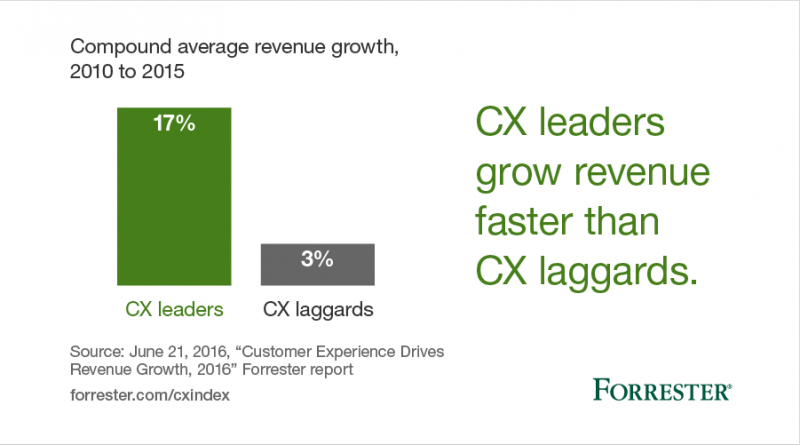Customer Journey Analytics is probably the most clichéd phrase in the customer experience ecosystem today. During the course of my discussions with several organizations, I realized that there is a handful who have got it right – both the meaning and the execution. And there are those who are eager to get it right but they lack clarity in execution.
Several perceptions exist on this subject. In this article, let us take a look at 4 common myths about customer journey analytics.
Myth 1: It is a plug and play approach
Often times, customer journey analysis is assumed to be just a plug and play approach. There are several products that offer this as an out-of-the-box feature. Once these products are installed, these products are expected to unearth the problems in customer journeys.
Reality:
While there are products that cater to customer journey analysis, most certainly they are not the plug and play types. There some products that act as ETL (Extract, Transform, Load) tools while others provide MDM (Master Data Management) capabilities.
Apart from this, there are those that provide great tools for visualizations. While each one is good at what they do, true customer journey analysis is much more than that. It requires identification of process, people, and technologies that constitute a journey.
Typically customer journey analytics starts with a consulting exercise where a consultant gathers information by talking to the user groups of specific journeys that the business wants to map. The journey does not just comprise of touch points from a consumer perspective but it must also map all the back office and IT processes that identify the challenges or constraints in that journey.
While tools and products are great, always start your analysis by identifying the journeys you want to map in the first place. Never start with data first approach instead start with a process first approach. Remember, data should always follow the process. Once, you have identified the process of a specific journey (say, what customers go through when they have a billing dispute) next begin by identifying each step that starts from bill generation, dispatch, customer touch point channels, complaint process, ticketing process, back office process, and closure. Once you have done this, then augment this map with data. Finally, do an analysis using the various tools to figure out where a gap exists.

Myth 2: With rich data and good analysts, customer journeys can be easily analyzed
Reality
This is akin to saying that if I have a car and I know how to drive, I can drive wherever I want. True, you can go wherever you want to go but the most important thing to do before you start your journey is to know ‘where’ you want to go (unless you are on a carefree trip).
Businesses certainly cannot operate in this model. While the data is good and the analyst that you have can do wonders, what is important is to figure out what is that you want to achieve. Otherwise, you will be all over the place. One good thing about data and analytics is that you can always make data tell a story by analyzing them. There is always a story! But is that the story you are after? Think again.
So, in essence, it is quite simple! Once again, start with what you want to achieve or what you believe is broken and then go fixing or improving it.
Myth 3: There are products that learn by itself, can auto-correct and modify itself based on data that it sees over a period
Reality
Products by themselves do not do that. They only provide the platform or capability for consultants and engineers to build upon. There is quite an amount of services involved to imbibe this intelligence by using various models that bring the best out of the data that is available.
With the advent of artificial intelligence and machine learning, many tend to think that when these principles are applied in the customer journey, a software program can understand the data all by itself and apply this self-learnt intelligence to provide suggestions for improvements.
This, however, is far from the truth. While software programs can be self-learning in nature, they must be supervised. You need a good data scientist who understands not just the business needs but has an eye for detail when working with the different types and forms of data. There will be several occasions where one must make the analytical models unlearn, re-learn, improve, etc. based on outcomes. What seems to be a perfect fit in one model may not be so within six months time! This could be due to the change in business operations, product behavior, and customer segments.

Myth 4: Measuring and improving customer experience is difficult and not possible
Reality
Improving customer experience is not possible if you cannot measure it. You cannot manage what you cannot measure.
And it is proven that good customer experience leads to a higher revenue growth. Refer to the Forrester’s statistics given; organizations that provide better CX are the ones that grow better on revenues. One way to measure the effect of customer experience is to tag it with changes in revenue and customer satisfaction scores when an improvement in customer journey is implemented. Many organizations have a CSAT to Revenue correlation already available where a % point change in CSAT means an increase or decrease in revenue.
As with any new technology, it is important to get proper information about customer journey analytics, customer journey analytics software customer journey management, tools, statistics and everything related to it for better understanding. Otherwise, these myths will remain and keep you from taking advantage of it.
- Categories
- Tags
- Archives
Subscribe For Updates
Get the Servion Blog updates in your inbox.
Recommended For You
- Average Handling Time (AHT): still the lynchpin of contact centers management?
- Why is customer service still a challenge in today's business landscape?
- The Evolution of Remote Call Centers: Enhancing Customer Experience in a Virtual World
- From Interactions to Journeys: How to Start Managing CX Holistically
- Why isn’t anyone talking about contact center reporting?











